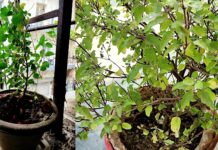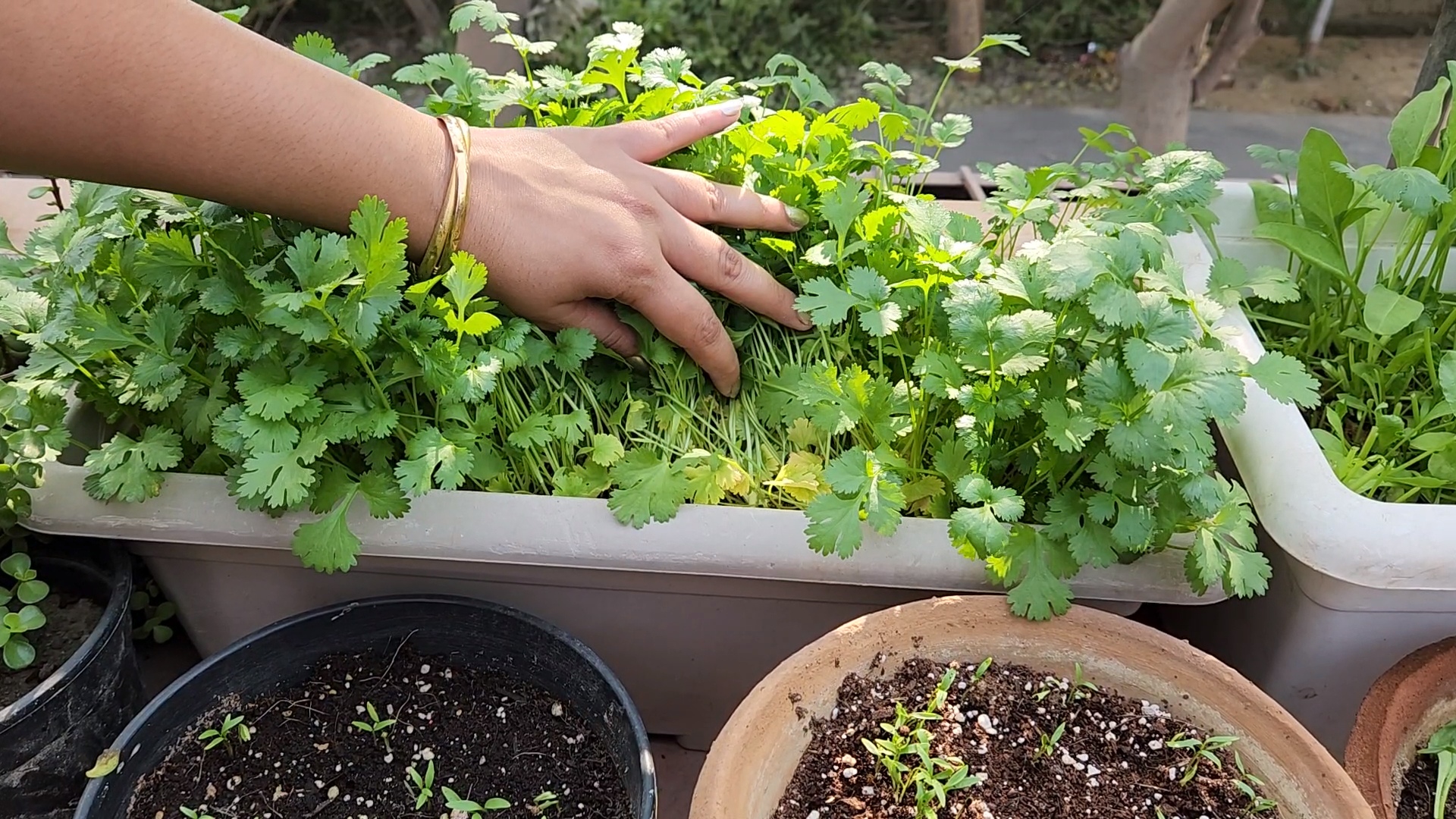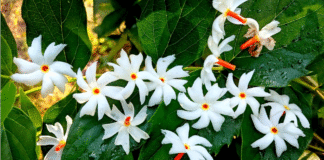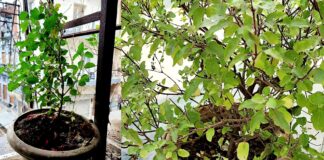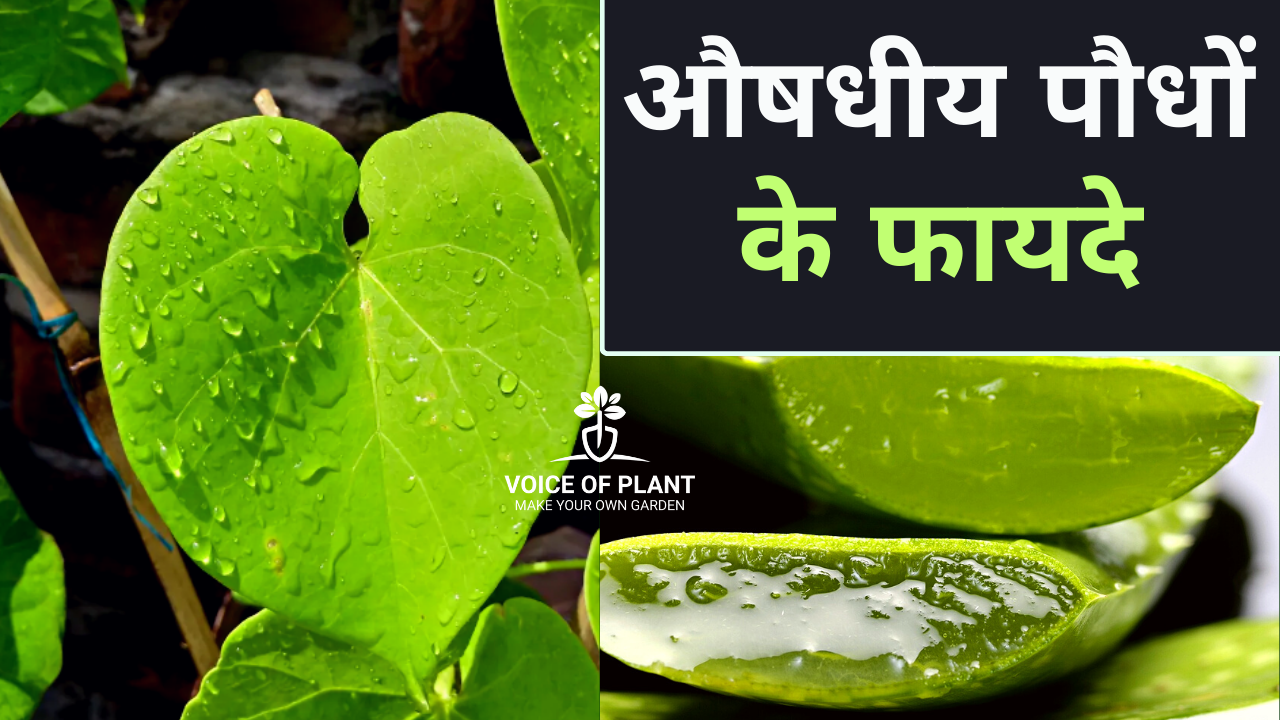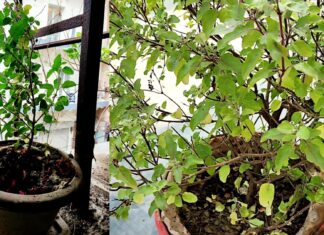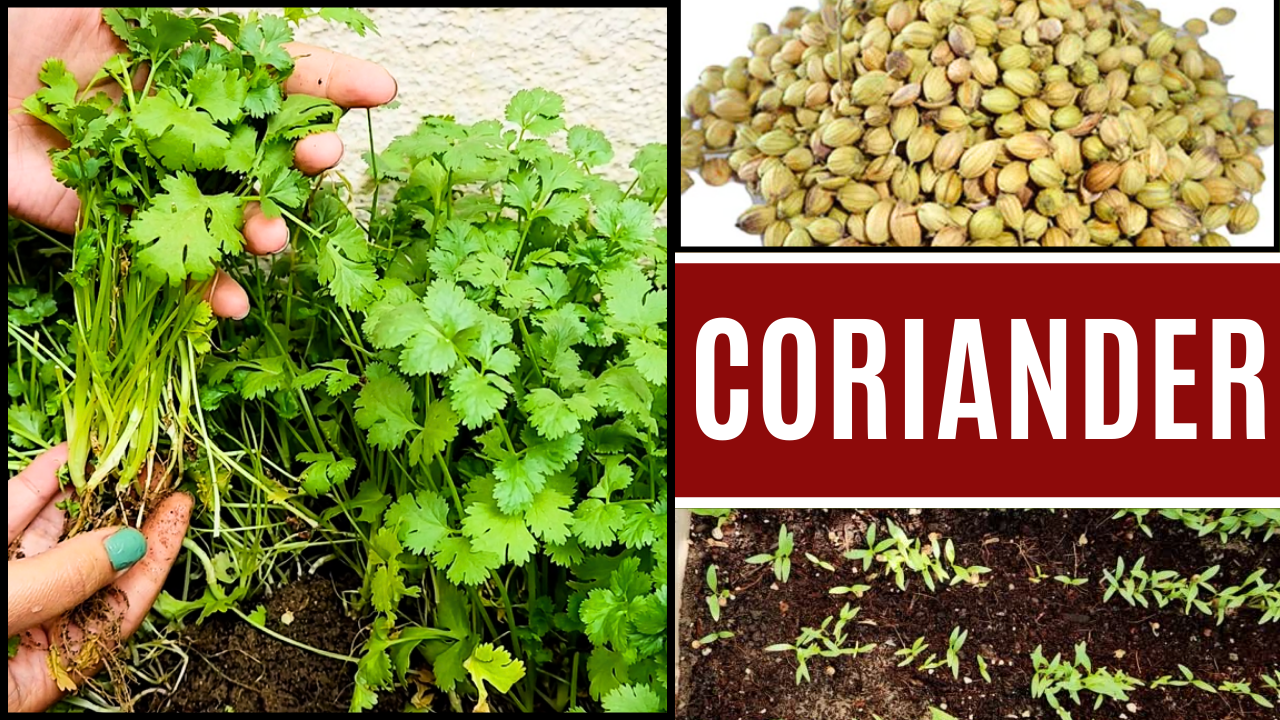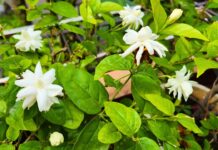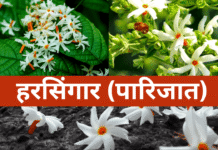The monsoon season is beautiful and beneficial for both us and our plants, as it helps plants grow much faster than in other seasons. However, we must be careful when using fertilizers during this time.

Many gardeners ask me every year same common question: Which fertilizer should I give to my plants during monsoon season?
The fact is, fertilizers can promote growth in plants during the rainy season, but if applied wrongly they can harm your plants instead of helping them.
Best Fertilizer for Plants in Monsoon
In this guide, you’ll learn:
- Should you give fertilizer to plants in monsoon?
- Which fertilizers is best to give in monsoon?
- Best time to give fertilizer in monsoon
- Best Organic fertilizer to use in monsoon
- Mistakes to avoid while giving fertilizer during monsoon
Monsoon Gardening Tips
Monsoon brings a natural boost to our plants and garden. Many gardening activities start happening on their own without any effort.
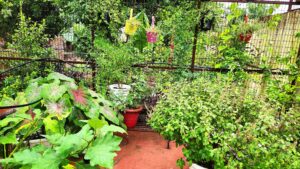
You might have noticed:
- plants that slow down in summer resume their growth.
- flowering plants start developing new buds and flowers.
- vegetable plants begin to bear fruit.
- plants become dense and lush green.
- the entire garden gets filled with greenery.
| Check our complete guide on how to care plants in monsoon season, read here: Monsoon Gardening: 16 Tips for Healthy Plants |
Why?
1. Rainwater is magical:
Rainwater itself is a natural fertilizer – it contains nitrogen and many minerals that are beneficial for both soil and plants.
2. Soil microbes become active:
During this season, the microbial activity in the soil also increases, making the soil richer in organic matter.
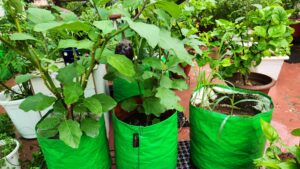
That’s why, you often see weeds, small seedlings and even plants you never planted start growing on their own in your garden and pots during monsoon season.
Should you give fertilizer in monsoon?
Things to Know Before Fertilizing in Monsoon
In container gardening, the soil remains wet for a longer period during rain. There is less space for the soil in pots or containers, so it takes time to dry out.
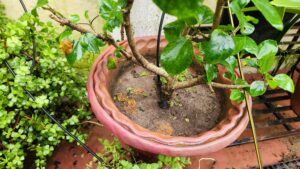
If you fertilize the soil in wet soil,
- it will wash away with the water,
- excess nitrogen in wet soil can cause root rot or fungal problems.
- Result: Waste of fertilizer + no benefit to the plants.
When to Give Fertilizer in Monsoon

Heavy rainfall wash away the nutrients along with the potting soil.
- Wait for the rain to stop for 1-2 days and soil becomes slightly dry.
Always remember: Do not fertilize all the plants unnecessarily, fertilize only those plants which are in flowering, fruiting or in a growing stage.
- You can fertilize the plants once or twice a month as per the need.
Best Organic Fertilizer for Monsoon Gardening
1. Vermicompost (Slow-Release Organic Fertilizer)
- improves strength of the soil and water retention,
- can be given to all all plants during monsoon,
- loosen the soil, add a handful amount to it and water gently.
2. Neem Cake Powder (Fertilizer + Pest Control)
- works as a fertilizer as well as a pesticide,
- improves the texture and quality of the soil,
- protects our plants from bacteria, disease, fungi and harmful insects,
- loosen the soil and add a little amount of Neem cake powder to it and water it.
| Want to know how to make and use Neem Cake Powder, read here: How to make Neem cake fertilizer at home |
Organic Liquid Fertilizers for Plants in Monsoon
1. Vermicompost Tea
- enriched with nutrients, quick to absorb and promotes for healthy growth,
- makes plants leaves shiny and boost flowering,
- suitable for all types of plant.
| Vermicompost is easy to make and use. Lean more about this organic fertilizer: How to make Vermicompost tea? Benefits & Uses |
2. Seaweed Extract
- easy to use,
- increases organic matter in the soil,
- activates beneficial microorganism,
- safe to use during monsoon season.
| Seaweed is safe and natural fertilizer. Lean here its benefits and how to use for plants: Seaweed Fertilizer: Benefits and How to Use |
Homemade Fertilizers for Monsoon
1. Onion Peel Tonic
- improves soil structure and water retention capacity,
- can be given to leafy, flowering, fruiting plants and seedlings,
- safe to use during monsoon season.
| Here’s a step-by-step guide to making onion peel fertilizer at home: How to make Onion Peel Fertilizer and It’s Uses |
2. Banana Peel Liquid Fertilizer:
- rich in potassium, calcium, magnesium, sulfur, and phosphorus,
- boost flowering and fruiting,
- encourages healthy root development.
| Learn easy steps to make banana peel liquid fertilizer at home, read this: How to make Banana Peel Fertilizer at home |
Mistakes to Avoid in Monsoon While Giving Fertilizer
- Avoid chemical fertilizers like Urea, DAP in wet soil – can damage the roots and plants.
- Avoid repeating same fertilizer every time – give different manures as per the need of the plants.
- Do not give fertilizer in wet soil.
Additional Tips for Container Gardeners
- Remove weeds or unwanted plants before giving fertilizer.
- Spray fungicide every 10-15 days.
- Spray neem oil to protect the plants from pests.
- Loosen the soil to improve aeration and prevent waterlogging.
———————
Monsoons already boost growth of our plants. Fertilizers should be given at the right time, in the right quantity and in organic form.
Remember: less fertilizers in monsoons = more benefits for your plants!
Enjoy the rains, take care of your plants, and let the monsoon work its magic.
🌿 Happy Gardening!
